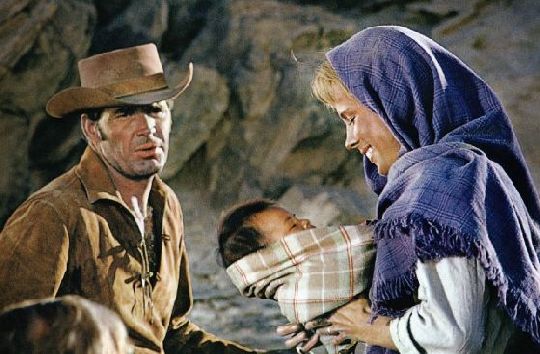Duel at Diablo (1966) 
“Afraid to turn their backs on each other they fought side by side against the Indian!”

Director: Ralph Nelson
Cast: James Garner, Sidney Poitier, Bibi Andersson
Synopsis: Lieutenant McAllister is ordered to transport several ammunition wagons to another fort through Apache territory with only a small troop of rookie soldiers to guard them.
Ralph Nelson’s Duel at Diablo is a strange hybrid of Saturday matinee action Western fused with a racial prejudice theme that never quite manages to jell the way you imagine the filmmakers would have wanted it to. The ever-reliable James Garner gets good measure out of the central role of Jess Remsberg, a former scout searching for the man who killed and scalped his squaw bride, while Sidney Poitier looks out of place as a dandified horse seller whose race ironically precludes him from having any romantic interest whatsoever.
We meet Remsberg as he stumbles across the tortured remains of an army scout left in the searing sun by renegade Apaches who’ve escaped from their reservation. He spies a lone rider, clearly on their last legs, trudging across the arid plain and, having saved them from a couple of Apaches, discovers the rider is a woman, Ellen Grange (Bergman regular Bibi Andersson making her obligatory (and solitary) stab at Hollywood stardom). Ellen was once abducted by the Apaches, and as we later learn, she keeps running away from her stiff-necked husband (Dennis Weaver) to be re-united with the papoose she had with her Apache husband (now, conveniently for the plot, deceased).
Learning that the man who might have killed his wife is at Fort Concho, Remsberg agrees to act as scout for a cavalry troop transporting ammunition there, while Grange’s husband accompanies the troop for protection as he delivers his wares to the fort, and a horseman named Toller (Sidney Poitier) is forced to go along if he wants to collect payment for the horses he has supplied to the cavalry. The troop, made up mostly of greenhorns, and led by Lt. Scotty McAllister (Bill Travers), is ambushed by the Apaches and finds itself fighting a desperate battle for survival, with depleting supplies of water and ammunition, as it waits for reinforcements from Fort Concho to save them.
Although it would appear from the plot summary that there’s lots going on, there really isn’t much of interest happening outside of the battle scenes, which are both prolonged and extremely well-staged. The boundaries of Hollywood’s self-imposed censorship laws were being stretched to their absolute limit in 1966 – and would finally be broken by the following year’s Bonnie and Clyde – so we see plenty of arrows zapping into hapless cavalrymen’s backs as the troop’s numbers slowly dwindle.
Considering Duel at Diablo is a film whose subtext concerns racial intolerance, it’s ironic that no mention is made of Poitier’s colour – or then perhaps it was Nelson’s deliberate ploy to illustrate how racial prejudice thrives beneath the surface of apparent tolerance. Either way, nobody in the movie appears surprised to see a black man walking around in a wealthy ‘white man’s clothes’ or refers to him in any derogatory manner. In fact it’s the principal white characters who are subjected to overt racism: Garner because of his marriage to an Indian squaw, and Ellen Grange who, because of her relationship with the Apaches, is abused by both the white people and the Apache women.
The film seems longer than 103 minutes, the result of some uneven pacing and too much time spent of Remsberg’s sub-plot. Apart from Bill Travers, who is truly awful as the brave but insecure Cavalry lieutenant, the solid cast give adequate performances without ever giving the impression that they’re trying to do anything other than just that. In fact, perhaps the most memorable thing about this reasonably diverting Western is Neal Hefti’s surprisingly modern (for its time), but appropriate score.
(Reviewed 21st May 2012)
httpv://www.youtube.com/watch?v=2r-iOEvoPT0
